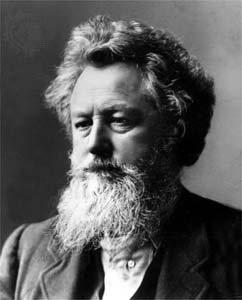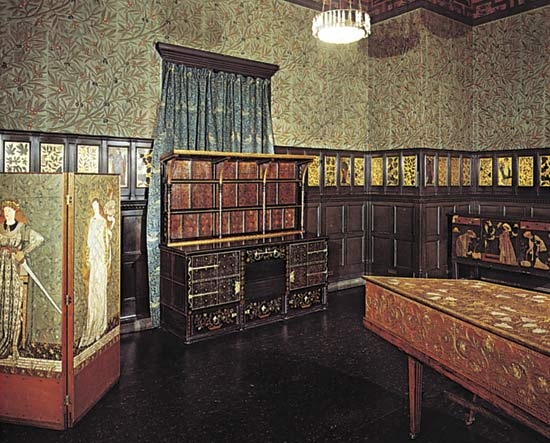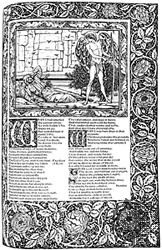Morris, William
American theatrical agent
born 1873, Schwarzenau, Ger.
died Nov. 2, 1932, New York City
U.S. theatrical agent and manager who opposed the attempted monopoly of vaudeville talent in the early 20th century.
Morris was hired by Klaw and Erlanger, heads of a legitimate theatre trust, to book vaudeville acts for their theatre chain. This position put him in conflict with the Keith-Albee United Bookings Office, which sought to monopolize variety talent. Though Keith-Albee was forced to buy out Klaw and Erlanger, stipulating that they stay out of vaudeville for 10 years, the independent Morris was still free to harass them. He continued to manage theatrical acts, with the popular Harry Lauder as his chief attraction. When theatres were closed to Lauder, Morris appealed to “trust-busting” Pres. Theodore Roosevelt, who requested that Lauder be allowed to appear in Washington, D.C., and personally attended the performance.
Morris, with strong support from the theatrical trade paper Variety, finally won his case against theatrical monopolies. He founded the William Morris Agency, one of the foremost theatrical agencies in the country. His son, William Morris, Jr. (born Oct. 22, 1899, New York City) later became president of the agency (1932–52) and from 1952 served as a director.
British artist and author
Introduction
born March 24, 1834, Walthamstow, near London, Eng.
died Oct. 3, 1896, Hammersmith, near London
 English designer, craftsman, poet, and early socialist, whose designs for furniture, fabrics, stained glass, wallpaper, and other decorative arts generated the Arts and Crafts Movement in England and revolutionized Victorian taste.
English designer, craftsman, poet, and early socialist, whose designs for furniture, fabrics, stained glass, wallpaper, and other decorative arts generated the Arts and Crafts Movement in England and revolutionized Victorian taste.Education and early career
Morris was born in an Essex village on the southern edge of Epping Forest, a member of a large and well-to-do family. From his preparatory school, he went at age 13 to Marlborough College. A schoolfellow described him at this time as “a thick-set, strong-looking boy, with a high colour and black curly hair, good-natured and kind, but with a fearful temper.” Morris later said that at Marlborough he learned “next to nothing…for indeed next to nothing was taught.” As in later life, he learned only what he wanted to learn.
In 1853 Morris went to Exeter College at the University of Oxford, where he met Edward Jones (later the painter and designer Burne-Jones (Burne-Jones, Sir Edward Coley, 1st Baronet)), who was to become his lifelong friend. Both Morris and Jones became deeply affected by the Oxford movement within the Church of England, and it was assumed that they would become clergymen. Nevertheless, it was the writings of art critic John Ruskin (Ruskin, John) on the social and moral basis of architecture (Western architecture) (particularly the chapter “On the Nature of Gothic (Gothic Revival)” in The Stones of Venice) that came to Morris “with the force of a revelation.” After taking a degree in 1856, he entered the Oxford office of the Gothic Revivalist architect G.E. Street. In the same year he financed the first 12 monthly issues of The Oxford and Cambridge Magazine, where many of those poems appeared that, two years later, were reprinted in his remarkable first published work, The Defence of Guenevere and Other Poems.
Visits with Street and Burne-Jones to Belgium and northern France, where he first saw the 15th-century paintings of Hans Memling and Jan and Hubert Van Eyck and the cathedrals of Amiens, Chartres, and Rouen, confirmed Morris in his love of medieval art. It was at this time that he came under the powerful influence of the Pre-Raphaelite (Pre-Raphaelite Brotherhood) painter and poet Dante Gabriel Rossetti (Rossetti, Dante Gabriel), who persuaded him to give up architecture for painting and enrolled him among the band of friends who were decorating the walls of the Oxford Union with scenes from Arthurian legend based on Le Morte Darthur by the 15th-century English writer Sir Thomas Malory (Malory, Sir Thomas). Only one easel painting by Morris survives: La Belle Iseult, or Queen Guenevere (1858). His model was Jane Burden, the beautiful, enigmatic daughter of an Oxford groom. He married her in 1859, but the marriage was to prove a source of unhappiness to both. Morris appears at this time, in the memoirs of the painter Val Prinsep, as “a short square man with spectacles and a vast mop of dark hair.” It was observed “how decisive he was: how accurate, without any effort or formality: what an extraordinary power of observation lay at the base of many of his casual or incidental remarks.” From 1856 to 1859 Morris shared a studio with Burne-Jones in London's Red Lion Square, for which he designed, according to Rossetti, “some intensely medieval furniture.”
 After his marriage, Morris commissioned his friend the architect Philip Webb (Webb, Philip Speakman), whom he had originally met in Street's office, to build the Red House at Bexleyheath (so called because it was built of red brick when the fashion was for stucco villas). It was during the furnishing and decorating of this house by Morris and his friends that the idea came to them of founding an association of “fine art workmen,” which in April 1861 became the firm of Morris, Marshall, Faulkner & Company, with premises in Red Lion Square. The other members of the firm were Ford Madox Brown (Brown, Ford Madox), Rossetti, Webb, and Burne-Jones. At the International Exhibition of 1862 at South Kensington they exhibited stained glass, furniture, and embroideries. This led to commissions to decorate the new churches then being built by G.F. Bodley, notably St. Martin's-on-the-Hill at Scarborough. The apogee of the firm's decorative work is the magnificent series of stained-glass windows designed during the next decade by Burne-Jones for Jesus College Chapel, Cambridge, the ceiling being painted by Morris and Webb. The designs for these windows came to Morris uncoloured, and it was he who chose the colours and put in the lead lines. He also designed many other windows himself, for both domestic and ecclesiastical use.
After his marriage, Morris commissioned his friend the architect Philip Webb (Webb, Philip Speakman), whom he had originally met in Street's office, to build the Red House at Bexleyheath (so called because it was built of red brick when the fashion was for stucco villas). It was during the furnishing and decorating of this house by Morris and his friends that the idea came to them of founding an association of “fine art workmen,” which in April 1861 became the firm of Morris, Marshall, Faulkner & Company, with premises in Red Lion Square. The other members of the firm were Ford Madox Brown (Brown, Ford Madox), Rossetti, Webb, and Burne-Jones. At the International Exhibition of 1862 at South Kensington they exhibited stained glass, furniture, and embroideries. This led to commissions to decorate the new churches then being built by G.F. Bodley, notably St. Martin's-on-the-Hill at Scarborough. The apogee of the firm's decorative work is the magnificent series of stained-glass windows designed during the next decade by Burne-Jones for Jesus College Chapel, Cambridge, the ceiling being painted by Morris and Webb. The designs for these windows came to Morris uncoloured, and it was he who chose the colours and put in the lead lines. He also designed many other windows himself, for both domestic and ecclesiastical use.Two daughters, Jenny and May, were born in 1861 and 1862, and altogether the five years spent at Red House were the happiest of Morris's life. After a serious attack of rheumatic fever, brought on by overwork, he moved in 1865 to Bloomsbury in London. The greater part of his new house was given over to the firm's workshops—an arrangement that, combined with her husband's boisterous manners and Rossetti's infatuation with her, reduced Jane to a state of neurotic invalidism. Morris's first wallpaper designs, “Trellis,” “Daisy,” and “Fruit,” or “Pomegranate,” belong to 1862–64; he did not arrive at his mature style until 10 years later, with the “Jasmine” and “Marigold” papers.
Iceland and socialism
 As a poet, Morris first achieved fame and success with the romantic narrative The Life and Death of Jason (1867), which was soon followed by The Earthly Paradise (1868–70), a series of narrative poems based on classical and medieval sources. The best parts of The Earthly Paradise are the introductory poems on the months, in which Morris reveals his personal unhappiness. A sterner spirit informs his principal poetic achievement, the epic Story of Sigurd the Volsung and the Fall of the Niblungs (1876), written after a prolonged study of the sagas (medieval prose narratives) read by Morris in the original Old Norse. The exquisitely illuminated A Book of Verse, telling once more of hopeless love and dedicated to Georgina Burne-Jones, belongs to 1870.
As a poet, Morris first achieved fame and success with the romantic narrative The Life and Death of Jason (1867), which was soon followed by The Earthly Paradise (1868–70), a series of narrative poems based on classical and medieval sources. The best parts of The Earthly Paradise are the introductory poems on the months, in which Morris reveals his personal unhappiness. A sterner spirit informs his principal poetic achievement, the epic Story of Sigurd the Volsung and the Fall of the Niblungs (1876), written after a prolonged study of the sagas (medieval prose narratives) read by Morris in the original Old Norse. The exquisitely illuminated A Book of Verse, telling once more of hopeless love and dedicated to Georgina Burne-Jones, belongs to 1870.In 1871 Morris and Rossetti took a joint lease on the Elizabethan manor house of Kelmscott in Oxfordshire. In the same year Morris paid his first visit to Iceland, and the journal he kept of his travels contains some of his most vigorous descriptive writing. He returned to Iceland in 1873. The shared tenancy of Kelmscott, however, was never a success, and, after the final breakdown of his health in 1874, Rossetti left the house for good, to Morris's great relief. The following year the firm was reorganized under his sole proprietorship as Morris & Company. In 1875 Morris also began his revolutionary experiments with vegetable dyes, which, after the removal in 1881 of the firm to larger premises at Merton Abbey in Surrey, resulted in its finest printed and woven fabrics, carpets, and tapestries. In 1877 Morris gave his first public lecture, "The Decorative Arts" (later called "The Lesser Arts" ), and his first collection of lectures, Hopes and Fears for Art, appeared in 1882. In 1877 he also founded the Society for the Protection of Ancient Buildings in an attempt to combat the drastic methods of restoration then being carried out on the cathedrals and parish churches of Great Britain.
The Morris family moved into Kelmscott House (named after their country house in Oxfordshire), at Hammersmith, in 1879. Five years later Morris joined Henry Mayers Hyndman (Hyndman, Henry Mayers)'s Democratic (later Social Democratic) Federation and began his tireless tours of industrial areas to spread the gospel of socialism. He was considerately treated by the authorities, even when leading a banned demonstration to London's Trafalgar Square on “Bloody Sunday” (November 13, 1887), when the police, supported by troops, cleared the square of demonstrators. On this occasion he marched with the playwright George Bernard Shaw (Shaw, George Bernard) at his side. But by this time Morris had quarreled with the autocratic Hyndman Federation and formed the Socialist League, with its own publication, The Commonweal, in which his two finest romances, A Dream of John Ball (1886–87) and News from Nowhere (1890), an idyllic vision of a socialist rural utopia, appeared. Subsequently, he founded the Hammersmith Socialist Society, which held weekly lectures in the coach house next door to Kelmscott House, as well as open-air meetings in different parts of London.
The Kelmscott Press
 The Kelmscott Press was started in 1891, with the printer and type designer Emery Walker as typographic adviser, and between that year and 1898 the press produced 53 titles in 66 volumes. Morris designed three type styles for his press: Golden type, modeled on that of Nicolas Jenson (Jenson, Nicolas), the 15th-century French printer; Troy type, a gothic font on the model of the early German printers of the 15th century; and Chaucer type, a smaller variant of Troy, in which The Works of Geoffrey Chaucer was printed during the last years of Morris's life. One of the greatest examples of the art of the printed book, Chaucer is the most ornate of the Kelmscott publications. Most of the other Kelmscott books were plain and simple, for Morris observed that 15th-century books were “always beautiful by force of the mere typography.”
The Kelmscott Press was started in 1891, with the printer and type designer Emery Walker as typographic adviser, and between that year and 1898 the press produced 53 titles in 66 volumes. Morris designed three type styles for his press: Golden type, modeled on that of Nicolas Jenson (Jenson, Nicolas), the 15th-century French printer; Troy type, a gothic font on the model of the early German printers of the 15th century; and Chaucer type, a smaller variant of Troy, in which The Works of Geoffrey Chaucer was printed during the last years of Morris's life. One of the greatest examples of the art of the printed book, Chaucer is the most ornate of the Kelmscott publications. Most of the other Kelmscott books were plain and simple, for Morris observed that 15th-century books were “always beautiful by force of the mere typography.”Death and assessment
A sea voyage to Norway in the summer of 1896 failed to revive Morris's flagging energies, and he died that autumn after returning home, worn out by the multiplicity of his activities. He was buried in the Kelmscott churchyard beneath a simple gravestone designed by Webb.
Morris is now regarded as a modern and visionary thinker, though he turned away from what he called “the dull squalor of civilization” to romance, myth, and epic. Following Ruskin, Morris defined beauty in art as the result of man's pleasure in his work and asked, “Unless people care about carrying on their business without making the world hideous, how can they care about Art?” To Morris, art included the whole man-made environment.
In his own time William Morris was most widely known as the author of The Earthly Paradise and for his designs for wallpapers, textiles, and carpets. Since the mid-20th century Morris has been celebrated as a designer and craftsman. Future generations may esteem him more as a social and moral critic, a pioneer of the society of equality.
Additional Reading
J.W. Mackail, The Life of William Morris, 2 vol. (1899, reissued 2 vol. in 1, 1995), is the standard biography. E.P. Thompson, William Morris: Romantic to Revolutionary (1955, reprinted 1988), is the definitive political study. Fiona Maccarthy, William Morris: A Life for Our Time (1994), gives a balanced, sensitive view. May Morris, William Morris: Artist, Writer, Socialist, 2 vol. (1936, reissued 1966), is by Morris's daughter. Paul Thompson, The Work of William Morris, 3rd ed. (1991, reissued 1993), provides a valuable introduction. Other works on Morris are R. Page Arnot, William Morris: The Man and the Myth (1964, reprinted 1976); Carole Silver, The Romance of William Morris (1982); Peter Stansky, Redesigning the World: William Morris, the 1880s, and the Arts and Crafts (1985, reissued 1996); Raymond Watkinson, William Morris As Designer, 2nd ed. (1989); and Elizabeth Wilhide, William Morris: Décor and Design (1991, reissue ed. by Louise Simpson, 1997). Also of interest are Norman Kelvin (ed.), The Collected Letters of William Morris, 4 vol. in 5 (1984–96); and The Journal and other publications of the William Morris Society (1955–).
- Callias
- Callicrates
- Callide Valley
- calligraphy
- Callimachus
- Callinicus Of Heliopolis
- Callinus
- Calliope
- calliope
- Callistemon
- Callisthenes of Olynthus
- Callisto
- Callistus
- Callières, François de
- Call of Duty
- Callot, Jacques
- Callovian Stage
- Calloway, Cab
- callus
- Calmette, Albert
- calomel
- Calonne, Charles-Alexandre de
- Caloocan
- Calopogon
- caloric theory